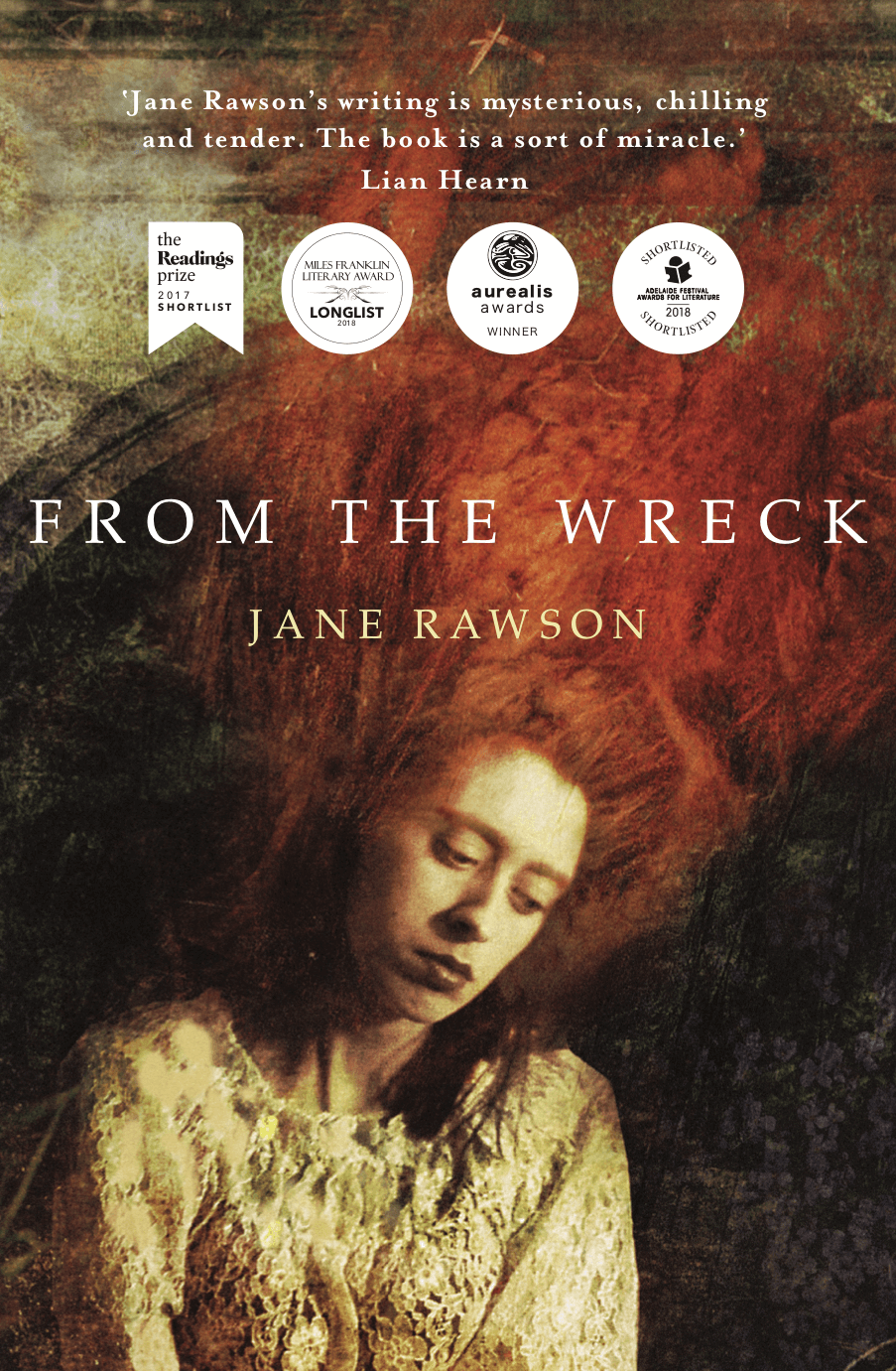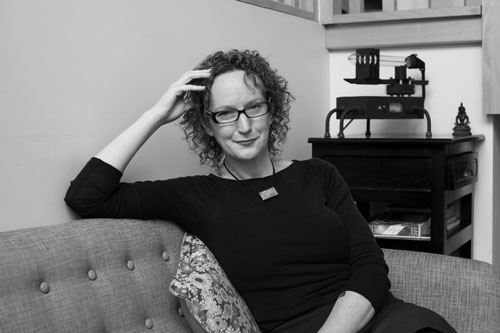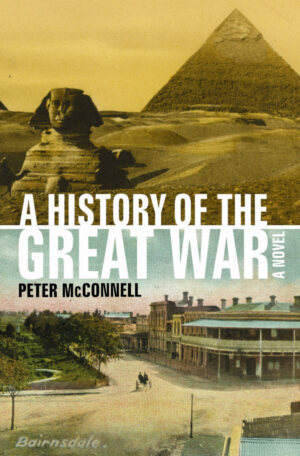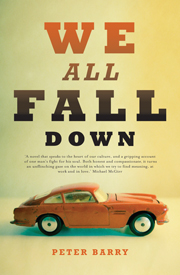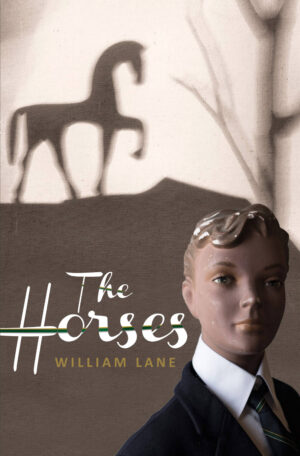In 1859, the steamship Admella sunk off the coast of South Australia. Among the few lucky survivors was sailor George Hills and a mysterious woman who vanished upon her rescue. These are facts of history, but Jane Rawson’s novel From the Wreck follows George home to colonial Port Adelaide. Travelling with him is the woman—a lonely shape-shifter from another dimension who binds herself invisibly to George and his son Henry, a peculiar boy who collects skeletons and sees strange visions of a world made of water and devoid of time. Rawson’s previous work, the 2015 novella Formaldehyde, demonstrated her astonishing ability to take seemingly dissonant ideas and have them make perfect, exquisite sense. On the surface, From The Wreck’s alternating perspectives of a PTSD-ridden sailor, a peculiar young boy and an alien cephalopod sounds farcical, but Rawson’s clear, lyrical prose—with its deep undercurrent of empathy—creates a breathtaking and revelatory reading experience. From The Wreck borrows from science-fiction, history and magical realism, forming a whole that is utterly unique and distinctly Australian. While Briohny Doyle’s The Island Will Sink pushed harder on its sci-fi elements, readers of the former will appreciate Rawson’s more lyrical, magical addition to the new groundswell of stellar Australian literary science-fiction. This is a masterpiece.
Books+ Publishing 4.5 stars, reviewed by Alan Vaarwerk
Alan Vaarwerk is online editor for Kill Your Darlings and editorial assistant for Readings Monthly
The magical delicacy of Rawson’s concept, the lightness of the writing, the resonant humanity and gentle humour all set this book apart …
Katherine England, SA Weekend April 22-23
I should know better than to start reading a book by Jane Rawson late at night…
From the Wreck is such an unsettling novel … I tried turning the light out half way through and inevitably I found myself tossing the scenario around wondering – worrying! how it might resolve itself. The catalyst for the book was the story of Rawson’s great-great-grandfather who spent eight days stuck on a reef when the steamship Admella was wrecked, but this is not like any family history I have ever read.
George Hills is rescued, only to be haunted by the horrors of those dying around him. He has memories of the mysterious woman who was with him when after numerous attempts the lifeboat finally reached him, and she knows what the survivors did in their desperation. While she seems to have disappeared off the face of the earth, George feels her otherworldly presence all the time.
His torment is mirrored by hers. She is a being from another world, seeking refuge on Earth after a catastrophe. A shape-shifter who can adapt to different life forms, she has been searching without success for her fellow beings and her loneliness is palpable. In her desperation she attaches herself to George’s son Henry in the form of a birthmark, and with her companionship he grows to be a strange little boy with odd caprices. He calls her Mark. Playfully, Rawson makes this being’s name for people ‘uprights’. If only we were…
Rawson, as I have said before, is a genius at characterisation of the sad, lonely and vulnerable. I have used the female pronoun for this being, because her first manifestation is as Bridget Ledwith, but her gender is as fluid as her identity:
I am wet, shaken and stretched. I am angry, scared. I am here all alone again alone alone alone. I am so sick of all this, this stupid world of running and hiding and hiding and running and pretending to be someone I am not and never have been.
Here where there is no place for me. Where there is no one I know and no one cares if I live or die. Don’t get me started on Henry, he would be stupider and narrower without me and that would make him far, far happier than he is today. If he never sees me again he will live like a normal boy and grow up into a healthy man and take his place in the great parade of stomping.
Perhaps if I had made myself into a man instead of a woman. But what did I know? Nothing. I knew nothing then and not much more now. Ten years, eleven, twelve, whatever it’s been of hour after hour living the life of a small boy. (p.251)
Contemporary issues seem to bleed from beyond the page into this artful blend of an authentic historical world and the fantastic, demanding our empathy. Refugees stranded on offshore islands where no one cares if they live or die. LGBTI kids pretending to be someone they are not and never have been. Abandoned children, feckless parents. The world of this novel is only too familiar and yet there is humour too, and a light touch with some of George’s more risible attempts to locate his shadowy woman.
A strange and mysterious novel, From the Wreck is oddly compelling. I have a feeling that I still be thinking about it for a while, but hey! It’s 3:30AM and time to try turning the light out again.
Lisa Hill, https://anzlitlovers.com/2017/02/06/from-the-wreck-by-jane-rawson/
Jane Rawson’s new novel has its feet planted in the earth as well as in the ocean and the stars.
Rawson says that she began this book as an attempt to record and make sense of historical facts from her family’s past. She knew that her great-great-grandfather, George Hills, was on the steamship Admella that was wrecked on the 6 August 1859 on Carpenters Reef, off the coast of South Australia.
Where she takes that story after that bald fact is stellar, or maybe I should say interstellar.
George and 23 other people survived the wreck. They were rescued after eight days —because of bad weather they could not be reached earlier. In this fictional account, before the shipwreck George has seen an ethereal figure, a woman, communing with the horses on board and licking the foam around their mouths. George can’t make sense of what he’s seen and goes looking for her on the ship, but she is nowhere to be found. His mates direct him to Bridget Ledwith’s room, but what he saw wasn’t her.
The figure is an intergalactic creature, forced from her planet by invaders:
They built machines, giant, and chemical plants. They built walls in the water and broke the ocean into seas and then they pushed the seas aside.
… They murdered us by accident and design. They won and we lost. There were so few of us left and so we fled. We launched ourselves out into that great quiet space. We listened to nothing but the thrum of the stars for I don’t know how long. We tumbled into another time, space, dimension.
The creature arrives on Earth, finds an ocean and says, ‘I crawled into this cave’. The creature is ungendered, but I am referring to it as female because of the forms she takes.
She takes the shape of an octopus: ‘But we were built for thinking, for making, for talking. We could squeeze into any space.’
She cleaves to George while he clings to the wreck. She saves him by feeding him human flesh from dead shipwrecked companions, pushing it into his mouth with a tentacle.
George is rescued, goes home, begins his family with his fiancée Eliza, now his wife. He is wracked by guilt and shame over the cannibalism but tells no one. Conversations around the fire at night with his brother-in-law explore Charles Darwin’s new theories on evolution. George cannot forget the being he calls Bridget Ledwith.
She stays with him as a cat and appears as a woman at opportune moments. When his child Henry is born, the midwife is a shape-shifted Bridget and she attaches herself to Henry’s back. Even her name is mutable: she is Bridget Ledwith, Bridget Sidney, and Henry calls her Mark, for the shape she takes as a birthmark. The remainder of the story concentrates on the tension between George, as he attempts to rid his family of Bridget/Mark, and Henry, who protects her.
This book is very much about interconnectedness and politics. It’s about how humans are convinced in their thinking that they are dominant species on the planet, that they have dominion over all animals and environments. Having the historical setting juxtaposes that thinking with the idea that everything in the universe, not just on Earth, is interdependent. We came from the stars, we evolved from the ocean. (Let’s not think about the populist theories of L Ron Hubbard and the story of how Superman came to live on Earth.)
Jane Rawson throws up many ideas to think about: the destruction of the environment and the atmosphere, the trashing of our oceans, whether animals have intelligence, space travel to find other places to live. And evolution. The planet was once all ocean and all life consisted of ocean creatures; humans have evolved from ocean creatures that became other animal forms. George’s cannibalism emphasises this point: we all feed off each other. What are we doing in our world today, but using other species as fodder: killing them, denying them safe, clean places to live free of violence, rejecting those who are deemed ‘not us’? People and animals are sacrificed to feed the desires of the dominators.
But the reverse is also crystal clear – call it ecology, call it society or politics, but we need each other to survive. This is most evident in the migration drama currently unfolding in the US. Human beings who care about other humans are coming to the aid of those who are stranded: protesters, lawyers and judges. People assisting others in need. We are all interconnected.
The survivors of this headlong rush to destruction will be the most adaptable. Some people say cockroaches, Jane Rawson thinks octopuses:
We could shift into any shape. And that was who we were and what we did: we didn’t fight the others to be bigger, fiercer, more toothy.
The book is not without touches of humour. Rawson says in a blog she wrote on the background to this book that she likes cats. Thus when George is brought ashore from the wreck, Bridget transforms into a cat:
My cold wet cave tugs at me but I am beginning to find again those scraps of bravery so I take a smaller form, closer to the ground, four-legged and fine whiskered, soft pawed, sharp pawed, and I raise my tail like a flag and slip out into this world and see what is what.
At another moment:
Bea watched as Miss Sidney tried to lift her glass to her mouth. She seemed to be struggling with its slipperiness. The girl held her hand up before her face and tapped its back once, twice. A circle of flesh raised itself, pop, on her palm and she took the glass up once more, this time with great success.
You can take the girl out of the octopus but not the …
If you are feeling staid in your reading and your thinking and you need fresh ideas that have been beautifully contemplated and written, this is the book. Don’t be put off by the ethereal tone of the writing or any thought that you don’t like speculative fiction. This book has its feet planted in the earth as well as in the ocean and the stars.
Linda Godfrey, Newtown Review of Books http://newtownreviewofbooks.com.au/2017/02/28/jane-rawson-wreck-reviewed-linda-godfrey/
Humans have always had a fascination for the sea, as well as a fascination for the stars. Jane Rawson’s From the Wreck masterfully brings together these little-understood, far-off places with a truly human story, set in the familiar location of the burgeoning colony of Adelaide.
When a man miraculously survives the 1859 wreck of the Admella, thanks to the efforts of a strange, otherworldly life-form in the guise of a woman, he becomes obsessed with finding her again on dry land. This haunting, lyrical book explores the lengths people will go to when confronted with the unknown, and the universal desire to find one’s place in the world.
Full of spirited, modern characters, this historical-cum-science-fiction novel draws comparisons with Michel Faber’s The Book of Strange New Things and Eleanor Catton’s The Luminaries. I highly recommend that you lose yourself in its depths.
Mostly Books Blog 25 February 2017 http://mostlybooks.com.au/blog/2017/02/25/from-the-wreck/
As a storyteller, Jane has a unique method of blending fact with fiction and science fiction. It is a fact that the author is related to one of the descendants of that shipwreck, and has a fascination with the story. Her fleshing out of the characters and their thoughts is remarkable, while many of the episodes are not for the faint-hearted to read. It is unusual though to hear the suburbs of Adelaide mentioned, and to join the men at their pub in Pt. Adelaide.
Blue Wolf Reviews. 1 March 2017 http://bluewolf-reviews.com/books/fiction/from-the-wreck/
While there’s certainly no drought of Australian historical fiction, it’s probably fair to say that no-one else has tackled the genre in quite the same way as Jane Rawson. From the Wreck opens with a real historical incident – the 1859 shipwreck of the SS Admella on a submerged reef off the coast of South Australia. We then follow the years-long aftermath of this tragedy through the perspective of three characters: George Hills, a survivor of the accident; Henry, his death-obsessed son; and a nameless shape-shifting creature from a different dimension that has attached itself to their family.
The addition of an actual alien is the book’s most obvious detour from the tropes of historical fiction and while it may strain believability for some readers, it does give Rawson the opportunity to cover some strange and frightening territory. George’s PTSD causes him to be plagued by nightmares. Convinced he’s filled with a green paste-like substance, he’s increasingly obsessed with finding the shape-shifting woman he saw on the night of the wreck. Meanwhile, the alien has physically attached itself to Henry – sometimes described as a mark or a shape on his back – and has started to influence the boy’s thoughts. This influence is slight at first, but when the alien learns that there might be another similar being in the world, its grip on Henry strengthens.
From the Wreck considers the terrible lengths to which beings, both human and other, will go to in order to survival, and the lingering trauma of these kinds of events for both the victim and perpetrator. Rawson’s use of a non-human perspective further illuminates the interdependency of all life. The mysterious relationship between the three characters steadily builds in intensity, occasionally lapsing into straight sci-fi and even horror. By carefully drawing from an array of genre conventions, Rawson has created a story that risks a lot. From the Wreck is utterly unique.
Chris Somerville, Readings Monthly March 2017 https://www.readings.com.au/review/from-the-wreck-by-jane-rawson

